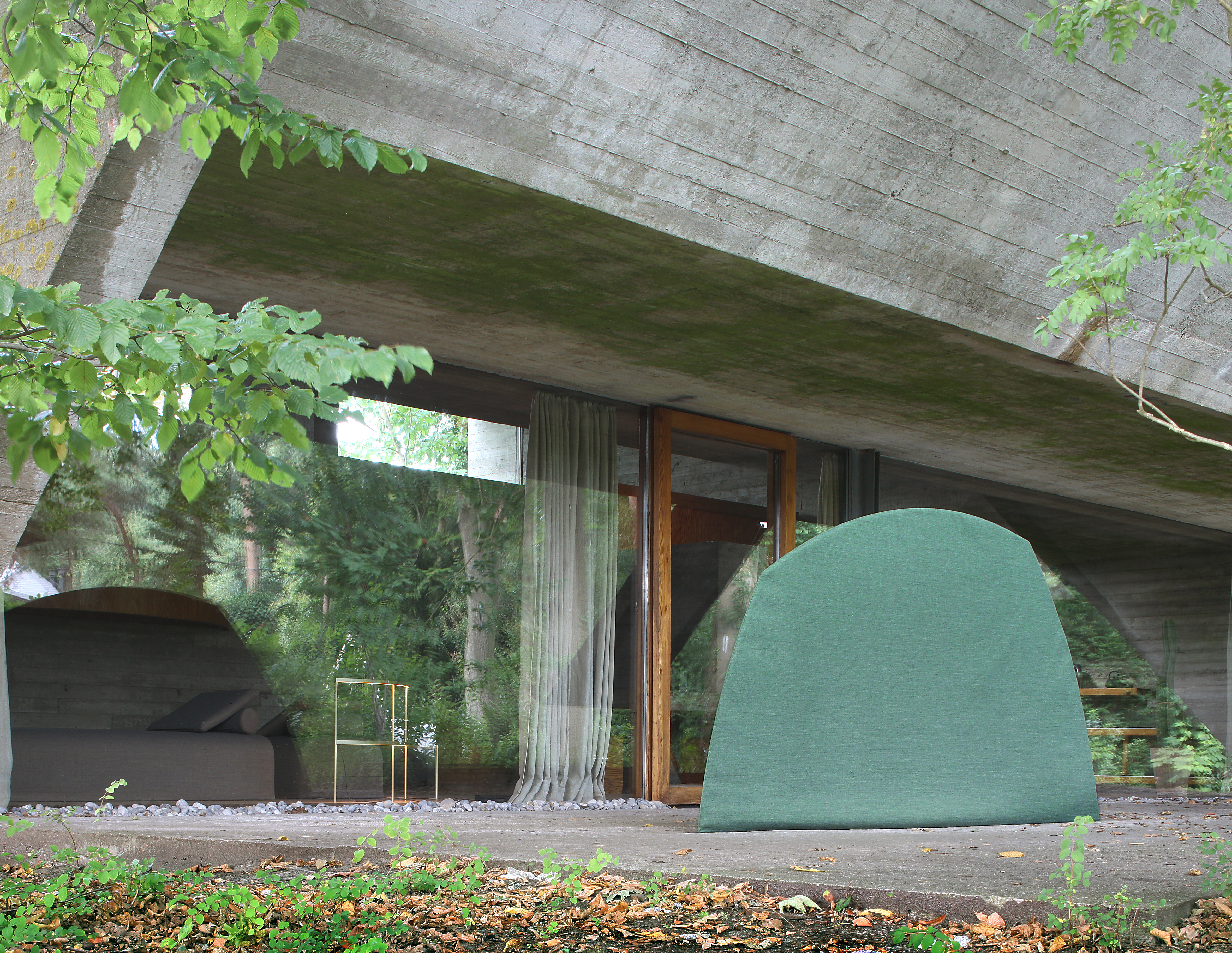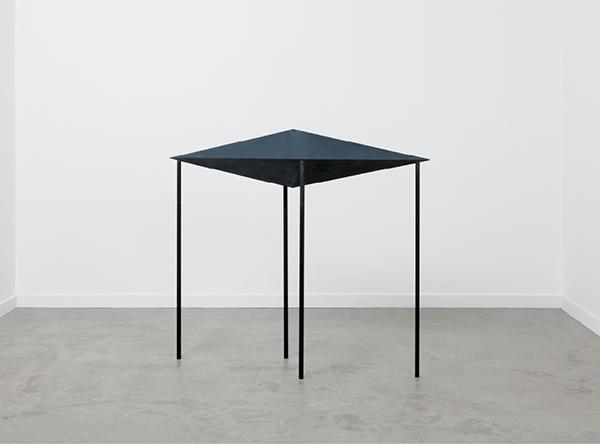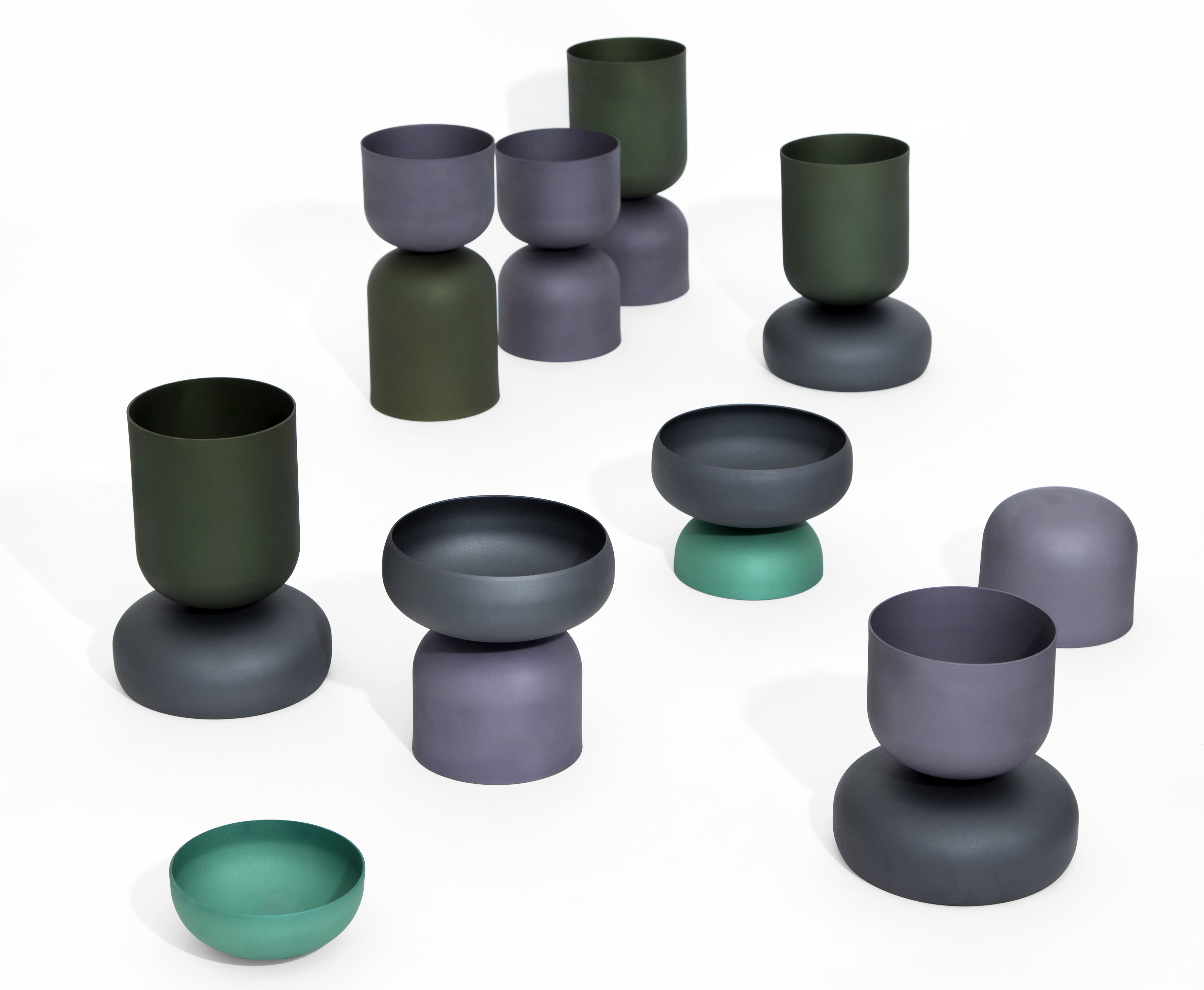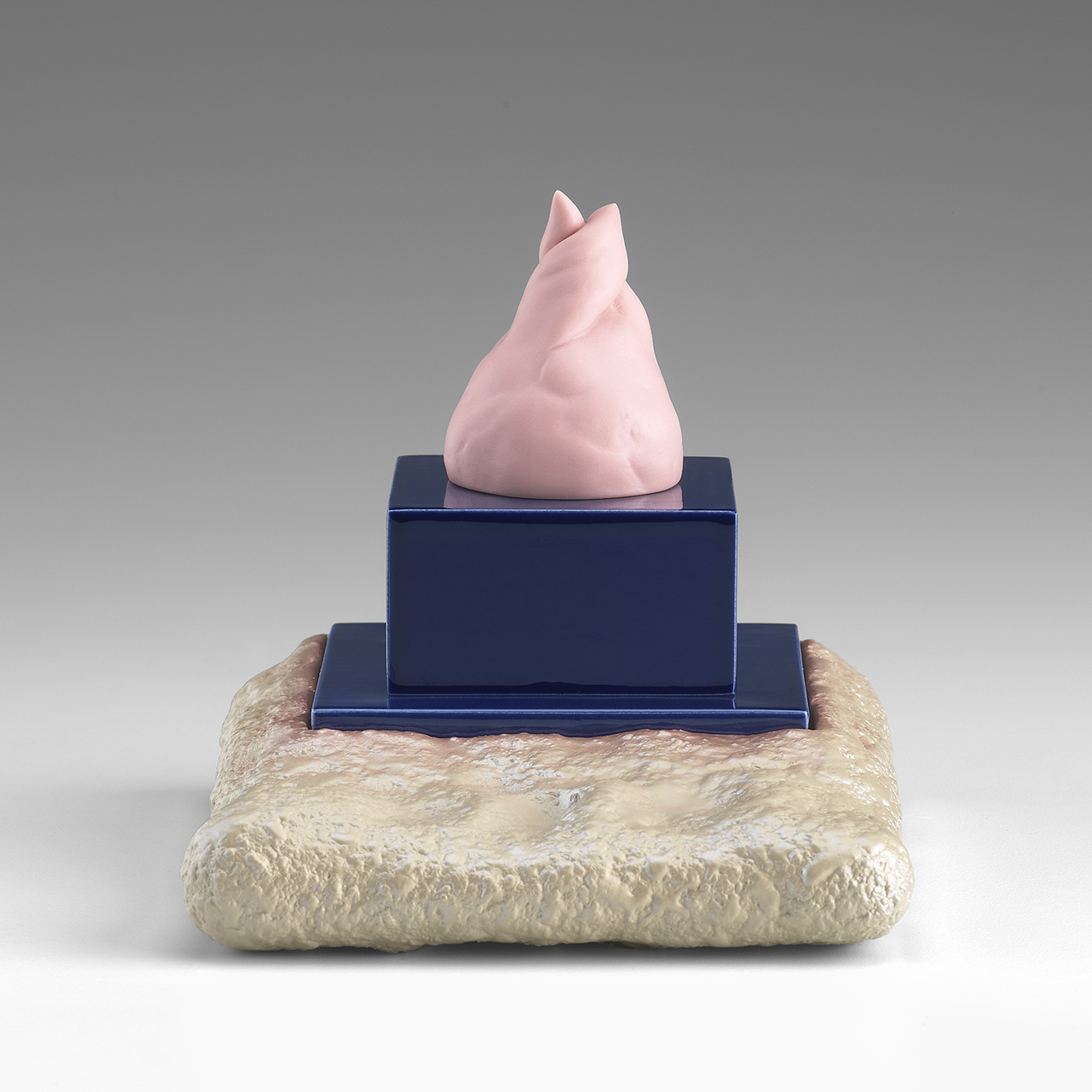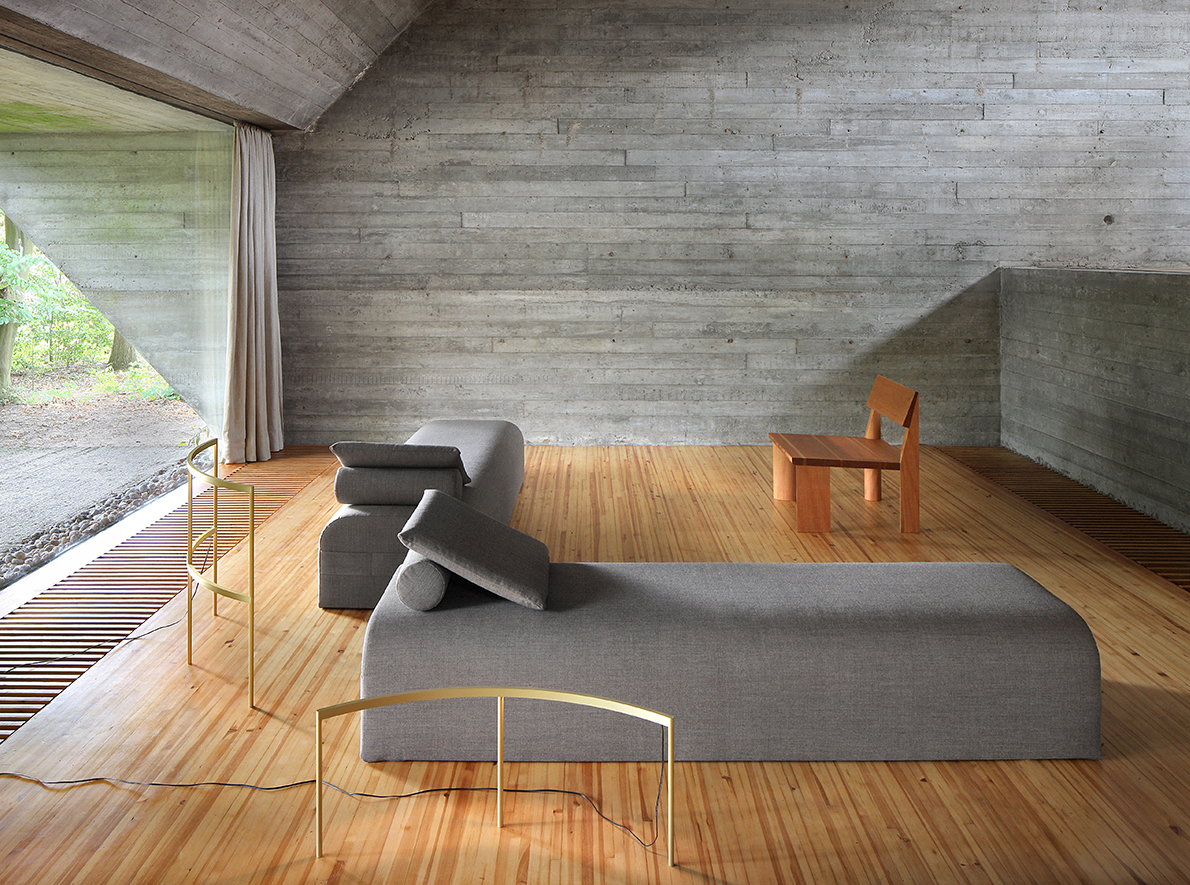
09.14.16
Excerpt: Exhibition
A Breathtaking Furniture Installation Staged Inside a Famed Brutalist House
When we named Jonathan Muecke to our American Design Hot list in 2014, the enigmatic Minnesota architect summed up his motivations with a 1963 George Brecht quote about seeking precision in objects — the same kind of precision, presumably, that he saw in the starkly angular 1974 Van Wassenhove House by Belgian architect Juliaan Lampens, where his new body of work for Maniera gallery is now on view. A year and a half after commissioning Richard Venlet to spend a week in a Henry Van de Velde house creating site-specific furniture, Maniera offered Muecke a menu of historic residences in which to do the same, and he immediately gravitated towards Lampens’s Brutalist masterpiece; the five objects he made there share its stark geometries and its juxtaposition of straight and curved lines. In case you’re not lucky enough to be passing through Ghent between now and October 11, we’re sharing images of the ARC Series installation below, along with information about each of the pieces on view.
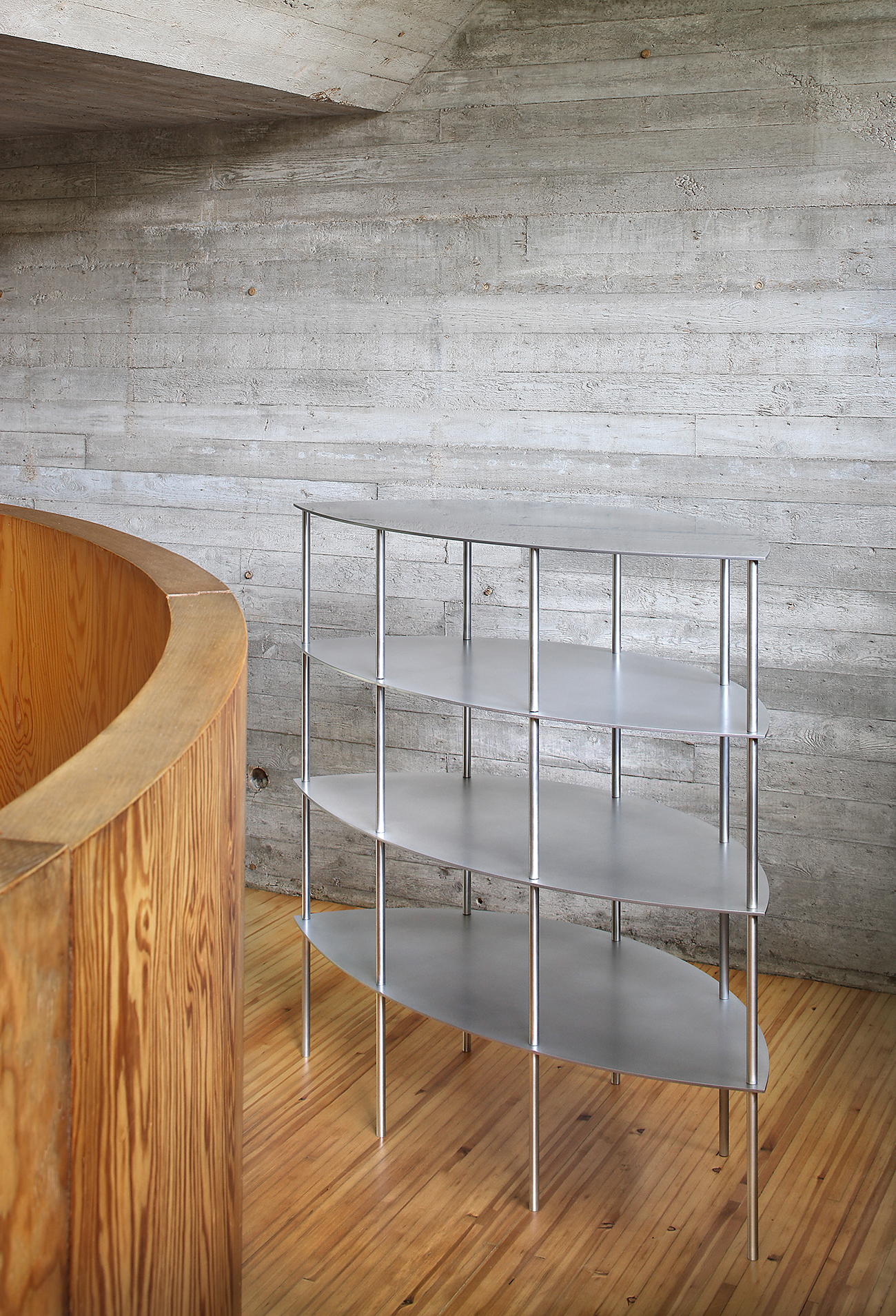 SHELF
SHELF
“A shelf which is directly inspired by a rack brought into the house by Albert Van Wassenhove. This wooden rack was placed on the split level next to the curved wall defining the sleeping area, also made of wood. The shelf caught Jonathan Muecke’s attention in a photograph by Jan Kempenaers, which shows the furniture full of books. In his design, Muecke remakes this shelf in his own idiom, incorporating the line and the arc. He defines the horizontal surface of the piece of furniture by doubling the arc with two different curves that meet one another at their ends. Each arc- plate is borne by seven slender legs at equal distances from each other on the outer rim of the object. When four examples of this object are stacked on top of each other the rack ‘happens,’ as with the wooden shelf in the Van Wassenhove interior. However, unlike the latter, Muecke’s rack is a very light object. The piece is made completely of waxed aluminum and the horizontal plate is only 5mm thick. Its presence in the space is closer to a line than a solid volume. Since the geometry derives from two different arcs on its upper surface, the furniture presents a different appearance depending on where we view it from.”
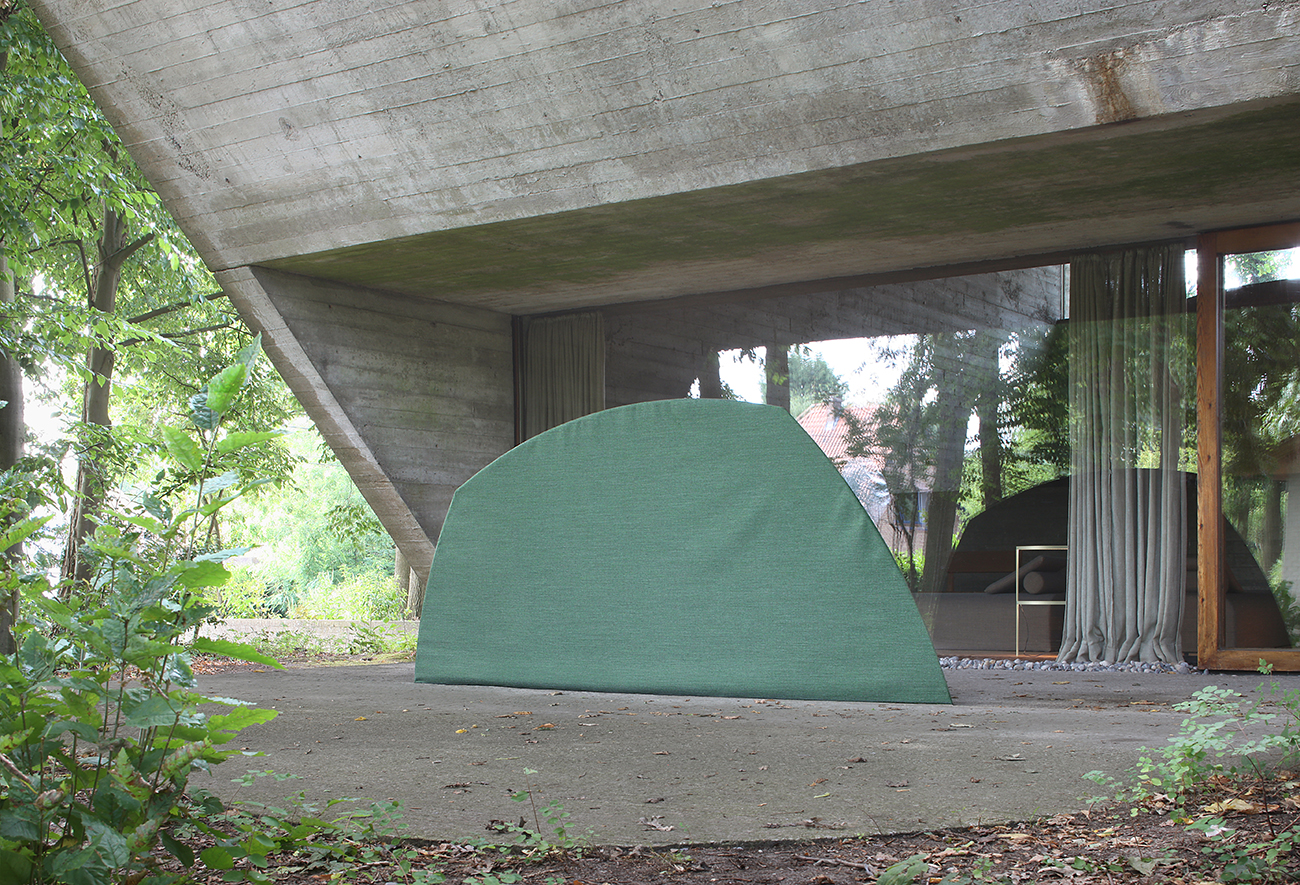 FTS – Flat Textile Shape
FTS – Flat Textile Shape
“Flat Textile Shape is a vertical textile piece that Muecke installs on the garden side of the Van Wassenhove House. The piece has no defined function, but takes Lampens’s architecture as a condition for its presence. It is fixed in the gap where two concrete floor slabs on the terrace join. The shape is composed of three different arcs that meet each other at the top and two outermost curves that meet the line at the bottom. The connection details on the light aluminum structure underneath the textile are not visible. When taken out of the context of the Van Wassenhove House, the Flat Textile Shape stands in front of us as a light, vertical textile piece that plays with our perceptions without claiming any function. The most obvious use of it would be as a room divider, yet Muecke prefers not to label it as such. However, as a design object, Flat Textile Shape awakens an expectation with its precise presence. This is where the attitudes of Juliaan Lampens and Jonathan Muecke meet: from furniture to building, designing universal objects with certain strengths.”
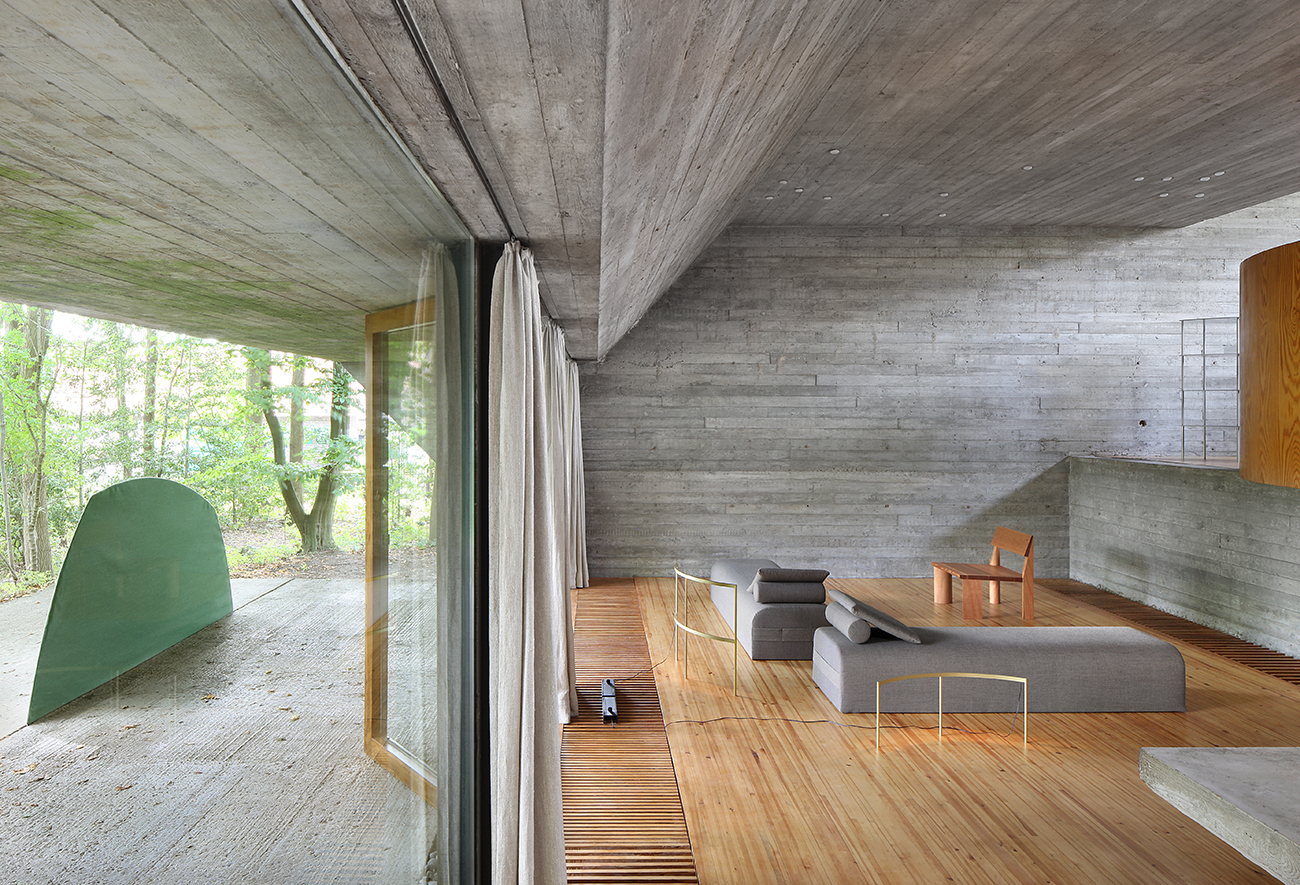
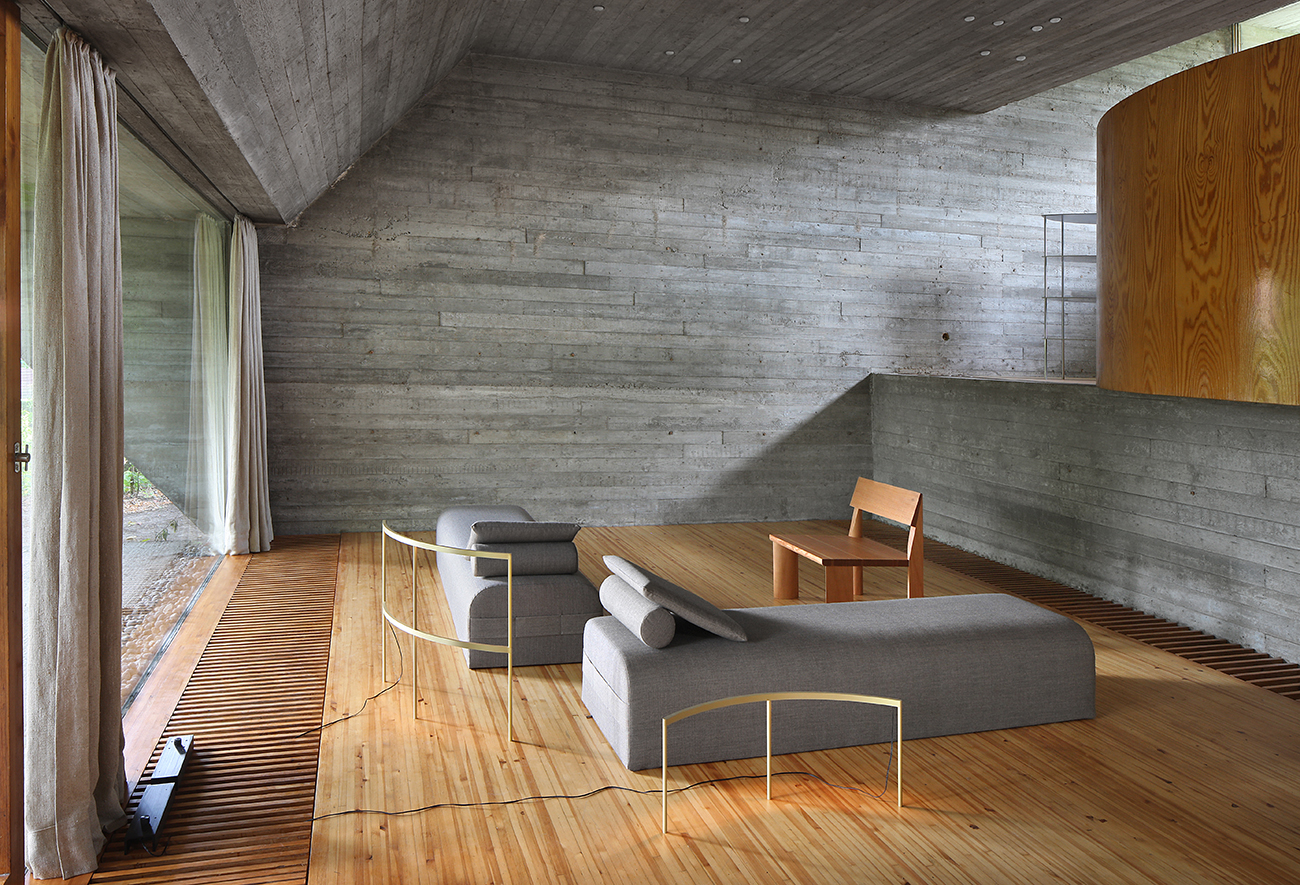 ARC – Single / Double
ARC – Single / Double
“In Muecke’s practice, the notion of drawing plays an important role, but the translation to the third dimension is the essential part of the work. In two lamps made for MANIERA 07, the idea of a drawn line becoming an object is reached through the introduction of a curve. This provides the structural stability for the object without losing the effect of a line. The piece is an elegant curve made with a C-shaped aluminum extrusion profile, which houses a LED strip inside and stands on three slender legs. The light is cast downwards onto the floor. In this way, the object inverts the concept of indirect lighting, which usually aims to maximize the illuminated area by the reflection off the ceiling or a wall. Muecke’s light objects, called Single ARC (30cm tall) and Double ARC (60cm tall), cast light onto the floor beneath them. They are light sources for the space rather than lamps with the clear function of illuminating another object. In some way, both these lamps are isolated objects. Yet as soon as they are given a place in architectural surroundings they create a space outside and around themselves. The color of the LED light throws the same golden gleam on surfaces such as the aluminum profile it is housed in. The object and its effect become one.”
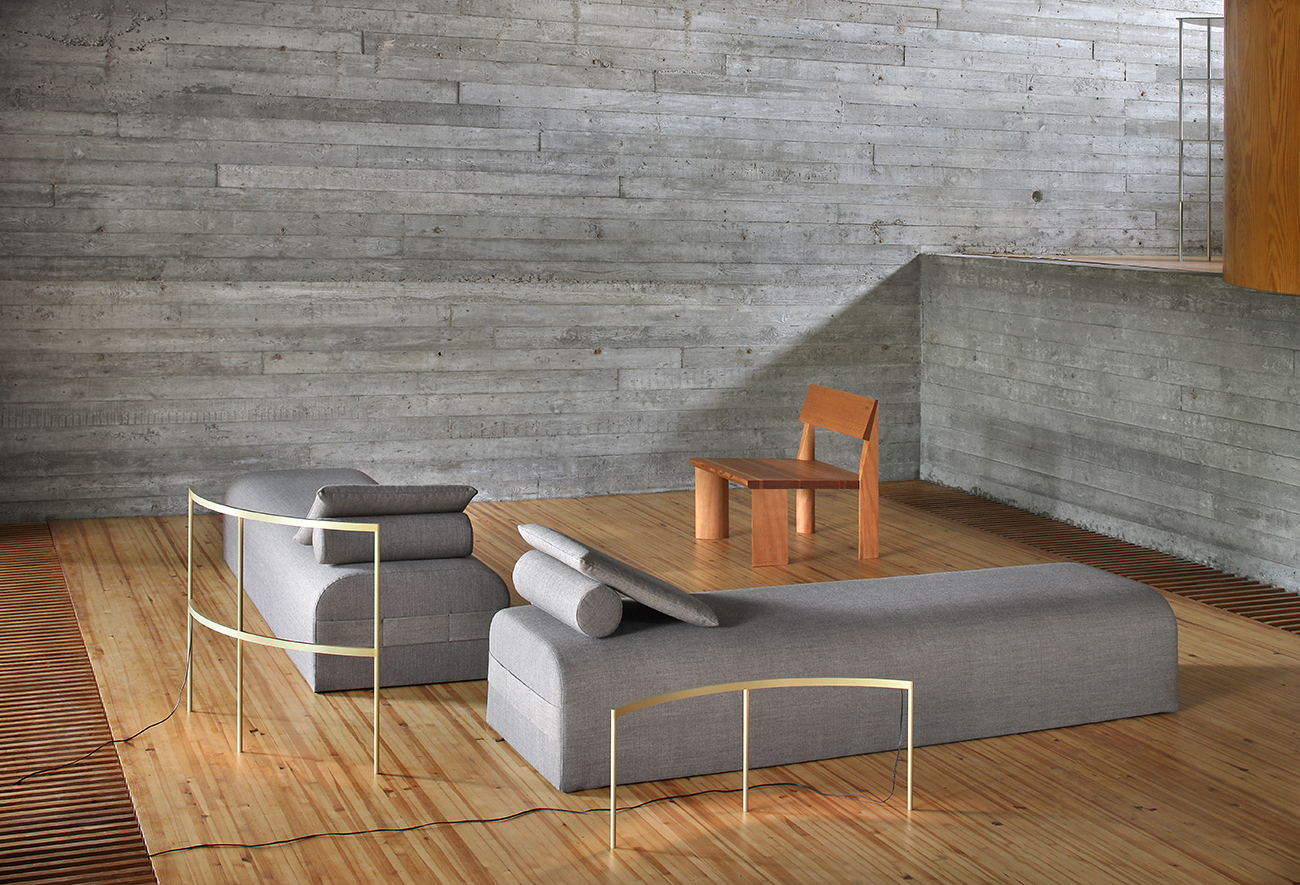 LWC – Low Wooden Chair
LWC – Low Wooden Chair
“In another object that is much clearer about its function, Muecke experiments with assembling two geometries that involve the line and the arc. The designer makes a low, wooden stool that refers to the furniture in the Van Wassenhove House as seen in the photographs by Jan Kempenaers. Very simple in its appearance, Muecke’s chair is a comfortable piece of furniture. It has a backrest and a slightly downward sloping seat, which are absent from Lampens’s spartan, right-angled furnishings. However, in its materiality and simplicity, the chair does relate to the other furniture in the house. Its appearance is ambiguous because of its solid though not heavy presence. The combination of two geometries, the line and the arc, is clearly visible in the front legs, which appear straight from the side but are convex towards the inside. The back legs are longer so as to carry the backrest. The line and the arc of the legs slightly change direction above the seat, so that the legs become slender and a lightness is granted to the furniture.”
